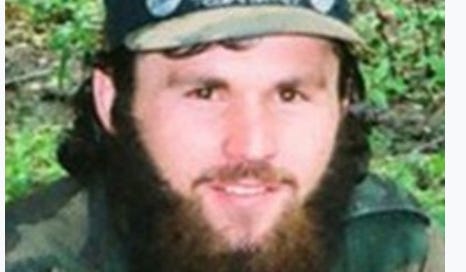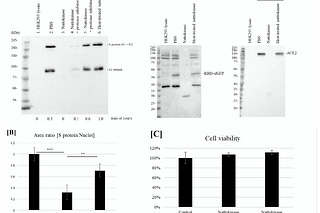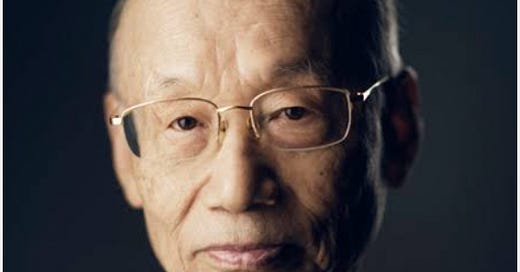
A Murder in the Kleiner Tiergarten
A 2019 murder of a Georgian citizen in Berlin is back in the spotlight as the convicted killer, Vadim Krasikov, is swapped in prisoner exchange with Moscow. Who exactly was the murder victim?
In 1999, bombs exploded in apartment blocks in the Russian cities of Buynaksk, Moscow, and Volgodonsk, killing 300 and injuring more than 1,000. Moscow blamed the bombings on Chechen terrorists. Some western analysts claimed it was a false flag attack to justify taking a harder line against Chechnya.
In 2002, the Dubrovka Theater in Moscow was seized by Chechen terrorists, resulting in the taking of 912 hostages. The attackers, led by Movsar Barayev, claimed allegiance to the Islamist separatist movement in Chechnya.
On August 23, 2019, a forty-year-old Georgian citizen named Zelimkhan “Tornike” Khangoshvili was murdered in the Kleiner Tiergarten—a park in the middle of Berlin. Khangoshvili was a Georgian citizen who had fought Russian troops in Chechnya and later claimed asylum in Germany.
A Russian citizen named Vadim Krasikov was arrested for the crime. Witnesses saw him throw a bike, a gun and a dark wig into the Spree River nearby. Police arrested him before he could escape on an electric scooter.
At his sentencing to life in prison in 2021, German judges said Krasikov had acted on the orders of Russian authorities, who gave him a false identity, passport and the resources to carry out the killing. On August 1, Krasikov was repatriated to Russia as part of a mass swap of Russian with Western prisoners. As AP reported the incident:
When Krasikov was arrested, Kremlin spokesman Dmitry Peskov called the allegations of Russian state involvement “absolutely groundless.”
In a February 2024 interview with former Fox News host Tucker Carlson, Putin signaled that Russia was willing to swap Krasikov for Wall Street Journal reporter Evan Gershkovich, who was jailed in Russia on espionage charges that he, the Journal and the U.S. government rejected.
Putin stopped short of naming Krasikov, but he clearly referred to him while pointing to a Russian “patriot” imprisoned in a “U.S.-allied country” for “liquidating a bandit” who had killed Russian soldiers during fighting in the Caucasus.
Here in Vienna, local press reporting of Vadim’s return to Russia has a decidedly disapproving tone. Why would the German government agree to free a convicted murderer who’d only been detained for five years in exchange for political prisoners who had NOT been convicted of murder? This strikes me as a good and intriguing question.
All of the western reporting I have seen contains little to nothing about Khangoshvili. The reader who peruses it might get the impression that he was merely a “Georgian national of ethnic Chechen descent” who’d gotten into some kind of a jam with the perfidious Russians.
Who was Zelimkhan “Tornike” Khangoshvili? The Wikipedia entry on his appears to be compiled from a variety of western sources:
Zelimkhan “Tornike” Khangoshvili was an ethnic Chechen born in Georgia who was a former platoon commander for the Chechen Republic of Ichkeria as a volunteer during the Second Chechen War, and a Georgian military officer during the 2008 Russo-Georgian War. Later on, he allegedly turned into a useful source of information for the Georgian Intelligence Service by identifying Russian spies and jihadists operating on domestic and foreign soil to Georgian intelligence agents. Khangoshvili was considered a terrorist by the Government of the Russian Federation, the Federal Security Service (FSB RF), and wanted in Russia.
A salient feature of the western reporting I’ve read is its implied assumption that Khangoshvili was NOT an Islamic terrorist, but merely a Chechen freedom fighter. Thus, the case touches on the complicated and confusing conflict between the West and Russia.
Immediately following the September 11, 2001 attacks, Putin was reportedly the first foreign leader to call George W. Bush, and he subsequently facilitated US access to bases in Central Asia without a formal quid pro quo. He claimed he did this out of sympathy arising from Russia’s experience with Islamic terrorists from Chechnya. However, U.S. officials going back to Madeleine Albright have been inclined to view Chechens such as Khangoshvili NOT as terrorists, but as freedom fighters.
To be fair to the Russian government, Americans might ask the following questions about their own government:
1). Since 2001, has the U.S. government adopted an aggressive policy towards suspected Islamic terrorists?
2). Has the U.S. government tried to impose its will on foreign countries such as Afghanistan, Iraq, Libya, and Syria in the same way that Russia has tried to impose its will on Chechnya?
3). Do U.S. intelligence agents assassinate suspected Islamic terrorists in foreign jurisdictions?
4). How would the U.S. government regard the German government granting asylum to a man suspected of being involved in the death of American citizens?
5). The U.S. and British authorities expressed outrage at the Russian government’s imprisonment of Evan Gershkovich on charges of espionage. He was arrested on a trip to Yekaterinburg, which is home to the headquarters of the Central Military District of the Russian Armed Forces. Russian authorities claimed he was gathering sensitive information about military affairs for the CIA—a charge that U.S. officials vehemently deny. While Western outrage about Gershkovich may be justified, what are we Americans to make of the U.S. government’s treatment of Julian Assange?
In a world in which NO government can really be trusted to tell the truth, and most of the mainstream press resembles propaganda organs, it’s very difficult if not impossible to know what to make of the fact that the German government agreed to release the convicted murderer Vadim Krasikov.

















So much more to investigate. Start with the Orange Revolution, sponsored by Soros and the U.S. Intel agencies. Then move on to the Soros sponsored Rose Revolution in Georgia. Then take up the failed White Revolution in Russia, again sponsored by Soros. Listen to Tucker Carlson's interview with Putin in which Putin argues the Chechens were/are operated by the CIA. And, along the way, investigate the removal of Pope Benedict XVI by Soros agents, with a Georgia connection. Not sure you will get the full truth until we clean up the cesspool of U.S, money laundering in that part of the world.
"In a world in which NO government can really be trusted to tell the truth, and most of the mainstream press resembles propaganda organs, it’s very difficult if not impossible to know what to make of the fact that the German government agreed to release the convicted murderer Vadim Krasikov."
There's a sentence that is clearly the truth. My wife subscribes to the Wall Street Journal, and it's been astonishing to see WSJ's coverage of their correspondent's trial and imprisonment in Russia. Instead of the usual adjective, "alleged," every mention of the reporter's name is preceded by words like "falsely accused," etc. Can you imagine them doing that with any other accused, with Trump, for example? And if their reporter had been also working for CIA (Operation Mockingbird), would they know? Even if the WSJ editor or publisher was also working for CIA, would they necessarily have been told their reporter was too?
But the payoff came with the prisoner exchange. Columns and columns about the perfidy of Putin and Russians, accompanied by comparisons to the "rule of law" in the civilized West. No word, of course, about Western crimes. I couldn't help thinking about Trump's 34 felonies, his attempted assassination, and especially about Julian Assange, someone definitely falsely accused and all but murdered for publishing true information of the type that made Daniel Ellsberg a hero. Then in the last day or two, I saw a photograph of an alleged terrorist held without charges for 21 years while being shuttled for torture from CIA "black site" to CIA "black site," the latest said to be in Romania. In the photo, said to be the first ever released from a CIA black site, the prisoner looked for all the world like a starving survivor of Dachau when U.S. troops arrived in 1945. Then I noticed--the photo is thought to be from 2004. What does he look like now?